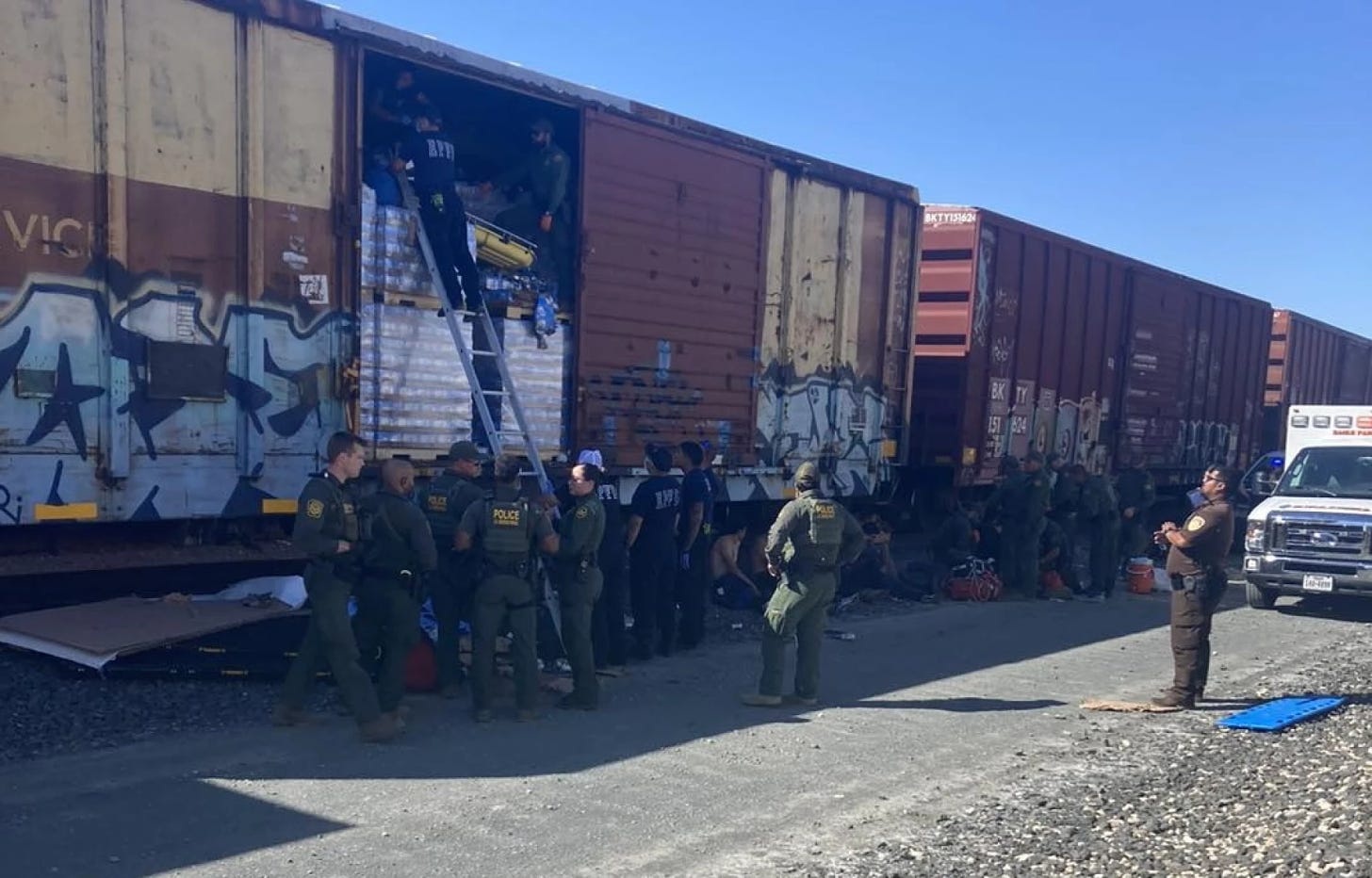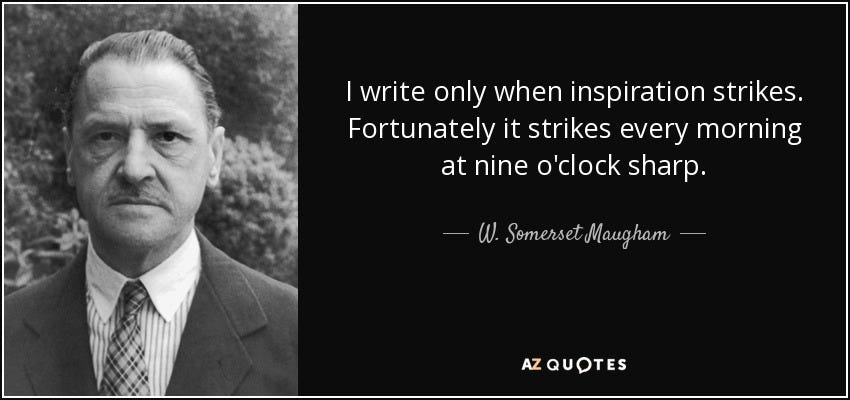Good Morning, friends,
A lot of fresh attention from around the country is on the Texas border after recent incidents in Uvalde/Knippa, Eagle Pass, and San Antonio where illegal aliens were found sweltering to death inside train cars.
It’s a basic variation on other incidents and practices involving 18-wheeler tractor trailers where aliens have died in similar circumstances.
Some of our readers like to single out U.S. Rep. Tony Gonzalez for dismay over some of his responses to the border crisis, but he’s not wrong when he pops up here in a KSAT-12 interview, pointing out that these incidents bear a tremendous cost for the communities they happen in. He also points out that these sorts of incidents are actually quite common in just about every community in the region.
The rest of the country usually just doesn’t bother to pay attention.
This week has been an especially busy one already in Kinney County— with many following along with the Sheriff’s Facebook account documenting just some of the high-speed pursuits and other mayhem that has been happening.
Local courts also have a busy docket scheduled, resulting in the expected return later this week of deputies from Goliad County, who will be supplementing local manpower while Kinney County Deputies are expected to testify in various hearings and cases associated with Operation Lone Star.
One incident that has escaped broader notice since our last newsletter from Quemado: Maverick County authorities are reportedly investigating a deadly shooting there.
Eagle Pass news organization “Informate” reports that the body of a man was found somewhere near Brown Street in Quemado, shot twice in the face and once in the arm.
There’s only about 230 people living in Quemado. Can’t remember the last time we heard about any real violence happening there, let alone a deadly shooting. We’ll have to follow up with Maverick County Sheriff’s Office, of course, but it seems extremely likely that the death is going to be border crisis related.
The event calls to mind recent occasions in Del Rio, where people have discovered at least one dead body bound at the wrists and ankles with duct tape also bearing bullet holes.
A recent article in the New York Times attempts to carry water for embattled Homeland Security Secretary Alejandro Mayorkas— trying to suggest that efforts to remove him from his post are purely political. That he is a good boy that has done nothing wrong with his stewardship of the Border.
While there is no doubt that collecting his hairless scalp would be a bit of a coup for U.S. Conservatives, the articles’ propositions are so laughable we refuse to link to the thing.
Why bother, when a still image we came across on twitter sinks it faster than the Lusitania?
The red line in the image, as Cruz points out on video, directly correlates to Mayorkas’ stewardship.
“Migrant deaths” are a very interesting choice of barometer, frankly. It’s one of the more indelible indicators of things.
For example, one doesn’t hear as much about out-of-control illegal immigration in the Rio Grande Valley, but just North of there, sits Brooks County, which historically is overwhelmed with dead illegal aliens who expire while trying to reach lucrative smuggling routes between the RGV and Houston.
With so many dying, it’s obvious that many more are passing through successfully up from the RGV, whether or not authorities in the RGV are willing to call attention to the traffic.
And so it is with Senator Cruz and that image.
Record deaths, sadly, equal record illegal immigration. Period. And try as they might, Mayorkas and his water carriers at the New York Times are being almost criminal in their efforts to diminish the charges.
We’ve had occasion in the past to point out some good entry-level reporting on the border crisis. As the months go by, a lot can change— and the “curriculum” for border crisis 101 has to necessarily change with it.
Reporter Matt Seedorff from Fox 26 in Houston does a pretty god job of trying to capture some of what residents in Maverick and Kinney Counties are going through, for his station’s audience in Houston.
Critics might point out that he doesn’t spend much time at all in trying to present any sort of “other side,” but one could also argue that such things are outside the scope of his reporting which is tightly rack-focused on the financial and mayhem costs.
It is illustrative, we think, that in recent weeks some of the loudest critics of Operation Lone Star seem to have abandoned their attempts to minimize such things, and instead seem to be focusing on the prospect that as a long-term effort Operation Lone Star might be unsustainable.
We would suggest they be cautious on that particular score— such goal post shifting might encourage the state to cross the Rubicon and try to keep illegals out of the state entirely, so as to eliminate the judicial costs which are a huge part of what is making Operation Lone Star so expensive.
In any event, if any readers have been trying to figure out a good “starting point” for friends and acquaintances that don’t “get” what’s happening down here— Mr. Seedorff’s reporting would be a solid bet.
A small confession now as we try to wrap things up:
We’ve been holding out on you since the last time we published— making a classic writer’s mistake of thumbing the air and waiting for a bolt to hit us out of the clear blue sky— some incident or moment to strike that would make one “feel” compelled to write.
Inspiration, for lack of a better word.
Meanwhile, a variety of worthy events well-within our self-appointed purview have come and gone with little acknowledgement on our part.
On the subject of inspiration, author Somerset Maugham had a great quote:
There’s a lot to unpack there, but basically, the idea being expressed is that one should set aside amateurish perceived needs for inspiration to strike first, and just get to work. The rest will take care of itself.
Maugham was one of those rare birds— an artist who found financial success in his lifetime. And, he found even greater acclaim after death, with wikipedia noting, his best work— the novel “Of Human Bondage,” is now regarded as a masterpiece and further examination mostly dismisses his contemporary haters, who may’ve resented his success in trying to dismiss him as merely competent.
Like so much excellent advice, this is one of those things that some of us have to hear over and over again.
And it’s not just for writers. It’s good advice for anyone with a talent or higher aspiration of some kind— admonishing and reminding one and all that for all its benefits, talent is secondary to work.
Have a great week— we may be back again before the weekend, until then keep it high and tight and try staying between the lines.
As always, the newsletter is produced as separately as possible from our employment with Kinney County and predates said employment. It should not be mistaken for any kind of official communication; any errors or other misdeeds are entirely our own.






I recall something from years ago that a writer must abandon everything that might interfer with the process. The only way to do it is to be single and not have dogs. A PB & J sandwich helps. And coffee. Lots of coffee.